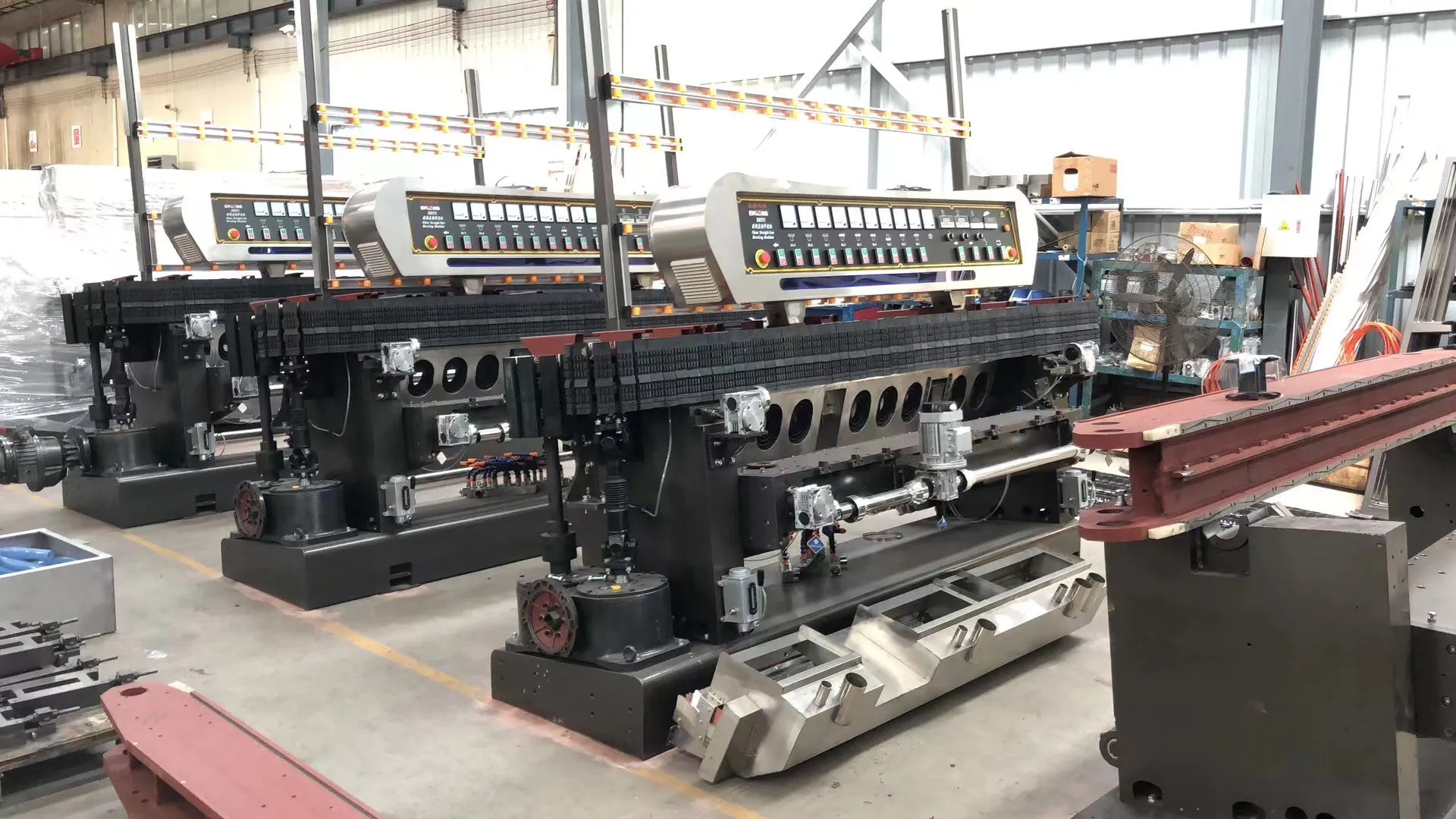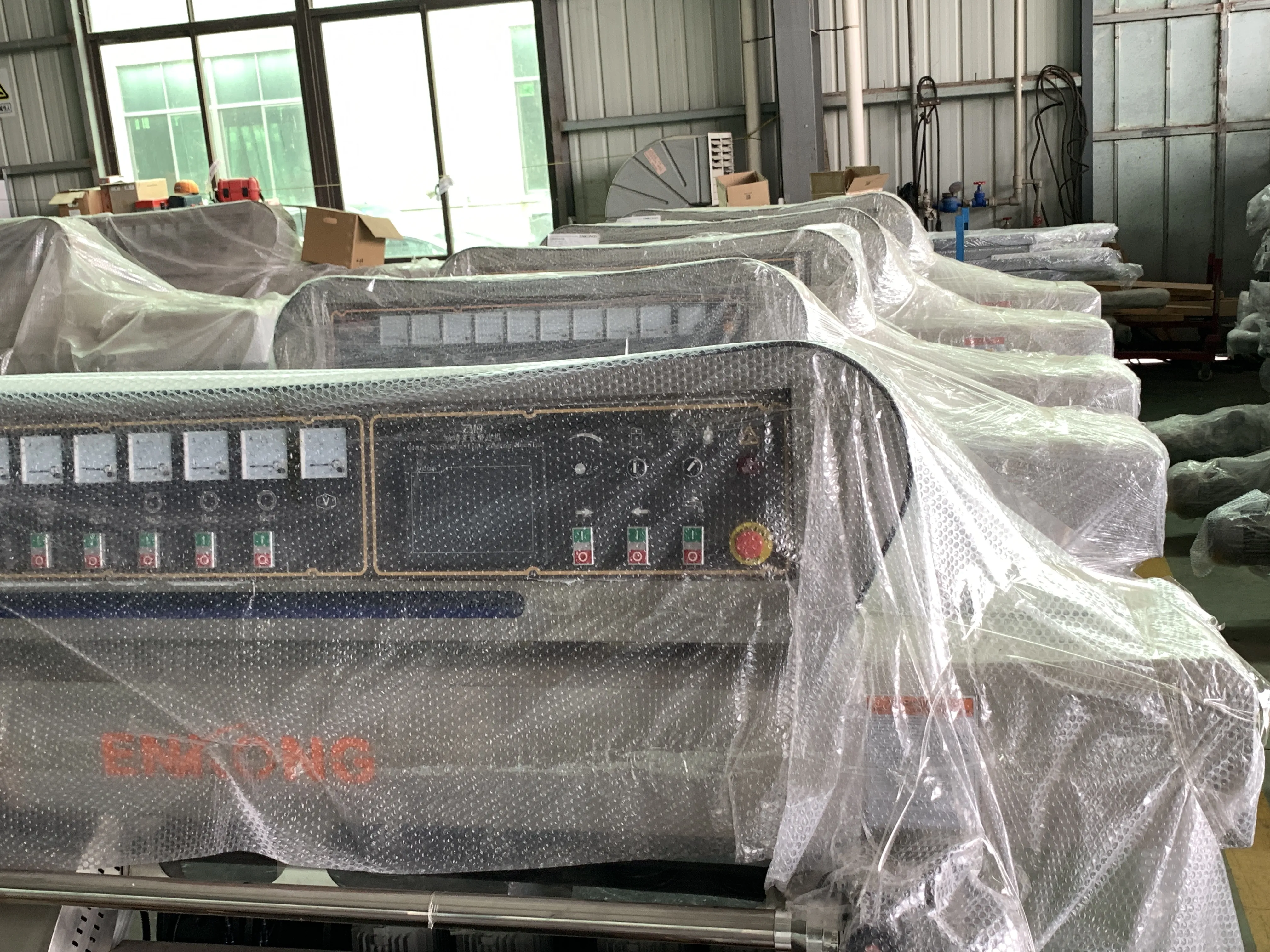In the glass processing industry, ENKONGS 4 spindles glass straight-line edging machine plays an integral role in shaping and finishing the edges of glass sheets. This equipment is designed to perform precise grinding, edging, and polishing tasks on glass edges, ensuring smooth and aesthetically appealing results. WhatsAPP+86 188 2308 1140 Email:jmek@enkongs.net

The glass industry is undergoing a significant transformation, propelled by advancements in core manufacturing technologies. At the forefront of this evolution is the modern glass grinding machine. This equipment has transcended its traditional role as a mere tool for smoothing edges; it has evolved into a sophisticated centerpiece of integrated glass processing equipment. The increasing demand for intricate glass shapes and flawless finishes—often initiated by precise glass cutting machines—has compelled manufacturers to develop grinding solutions that are smarter, faster, and more reliable. This article examines the latest trends and technological breakthroughs in glass edge finishing, emphasizing how these developments are opening new avenues for architects, designers, and fabricators worldwide.
A primary catalyst for innovation within the sector is the integration of automation and intelligent systems into standard glass grinding machines. Traditional models necessitated constant operator intervention for adjustments, resulting in inconsistencies and elevated labor costs. In contrast, contemporary models are equipped with programmable logic controllers (PLCs) and touch-screen interfaces capable of storing hundreds of edge profiles. An operator can simply select the desired finish—from a straightforward flat polish to an intricate ogee or pencil edge—and the glass processing equipment automatically adjusts parameters such as grinding head position, water flow rate, and feed speed accordingly. This level of automation guarantees that every piece of glass produced—whether from the first batch or the hundredth—exhibits an identical finish. Such repeatability is essential, particularly when initial blanks have been generated by high-precision glass cutting machine; any deviation during the grinding process could compromise cut precision significantly.
The evolution of glass grinding machines is intricately linked to the capabilities of upstream machinery. The quality of the grinding process is significantly influenced by the precision of the cut edge. Modern, computer-controlled glass cutting machines utilize diamond-tipped wheels and high-pressure scoring systems to produce a clean, micro-fractured edge. This pristine edge enables glass grinding machines to operate more efficiently, thereby reducing grinding time and prolonging the lifespan of diamond grinding wheels. Conversely, when an initial cut is subpar, grinders must remove additional material to achieve a smooth surface, resulting in wasted time and resources. Consequently, investing in a high-precision glass cutting machine transcends mere cutting accuracy; it represents an investment that optimizes the entire downstream glass processing equipment line, enhancing overall operational efficiency while lowering total ownership costs.
Versatility has emerged as a crucial selling point for contemporary glass processing equipment. Fabricators today manage a diverse array of projects ranging from thick laminated structural glass for staircases to thin delicate glass for electronic displays. A versatile glass grinding machine must be capable of accommodating this variety. Leading manufacturers now provide machines that can be configured with multiple grinding heads for different operations. Glass grinding machines can seamlessly transition between processing 3mm tempered glass and 25mm monolithic glass with minimal downtime. This flexibility becomes essential when paired with a complementary glass cutting machine that also accommodates various types and thicknesses of glass. The ability of the entire suite of glass processing equipment to swiftly adapt to changing orders offers fabricators a significant competitive advantage in today's fast-paced market.
Sustainability represents a critical area of focus in modern manufacturing. Traditionally, the operation of glass grinding machines has been associated with substantial consumption of water and energy. However, recent innovations are placing a strong emphasis on eco-efficiency. Additionally, energy-efficient motors and variable frequency drives (VFDs) optimize power consumption according to actual load requirements, thereby lowering the carbon footprint associated with glass processing equipment. Even advancements in glass cutting machines have contributed to environmental improvements; these systems are designed to minimize glass dust and enhance material utilization through sophisticated nesting software, effectively reducing waste from the outset of the production cycle.
Looking ahead, the future of glass grinding machinery is closely linked to the concept of fully connected smart factories. The next generation of this equipment will not only be automated but also equipped with advanced communication capabilities. Production data generated by grinders will be integrated into central manufacturing execution systems (MES), which also receive information from glass cutting machines. Glass cutting machine allows for real-time production tracking and optimization. For instance, if the glass cutting machine completes a batch of complex shapes, the glass processing equipment line can be automatically configured for the appropriate grinding sequence without human input, creating a seamless, uninterrupted flow from raw glass to finished product.
In conclusion, what was once considered a humble glass grinding machine has evolved into an essential component of intelligent manufacturing ecosystems. Its development is intrinsically tied to advancements in upstream technologies such as those found in glass cutting machinery; its performance directly influences output across the broader spectrum of glass processing equipment.


